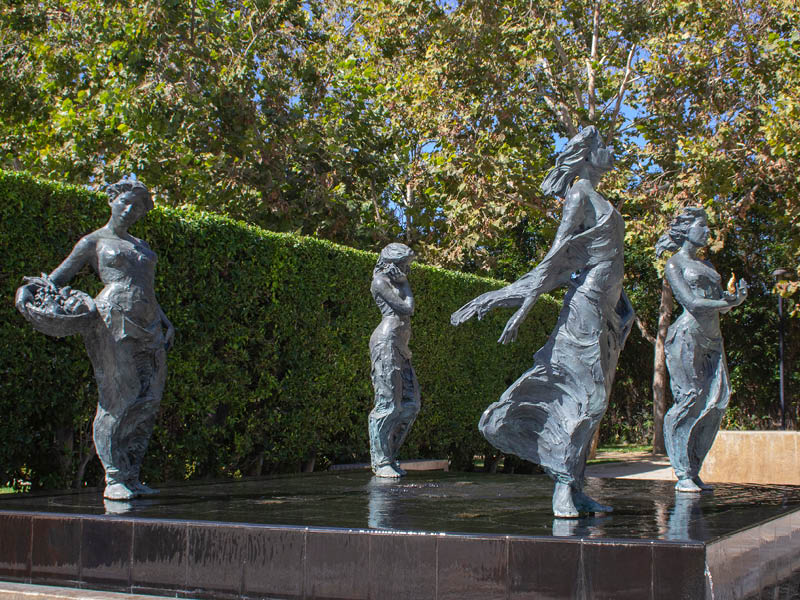
Outdoor sculptures and garden decorations add beauty and personality to any landscape—but over time, they collect dust, algae, bird droppings, and other grime that dull their appearance. Whether your garden features classical stone statues, whimsical metal art, or concrete fountains, using a pressure washer can be a fast and effective way to restore their shine—as long as it’s done safely.
In this guide, we’ll walk through the do’s and don’ts of pressure washing your outdoor decor—so you can refresh your space without accidentally damaging your beloved art. 🧽💦
🧠 Know Your Material Before You Wash
Not all sculptures are made alike, and the wrong pressure setting or cleaning solution could cause irreversible damage. Here’s how to handle the most common materials:
- Concrete or Stone (like limestone, granite, or marble): Generally safe to pressure wash using medium PSI and a wide-angle tip. Avoid high pressure near fine details.
- Metal (bronze, copper, wrought iron): Use low pressure and avoid harsh chemicals that can corrode or strip patina.
- Wooden sculptures: Very low pressure only, ideally with a soft wash solution. Wood can gouge, splinter, or absorb too much water.
- Resin or fiberglass: Light pressure and gentle soap. These materials can crack or fade if cleaned too aggressively.
- Painted or sealed decor: Check for flaking or damage. Power washing may strip paint if the finish is weak.
🧼 When in doubt, test a small hidden area first.
🧰 Tools & Supplies You’ll Need
- Pressure washer (1,200–2,000 PSI is usually sufficient)
- 25° or 40° nozzle tip
- Garden hose with spray nozzle
- Biodegradable or stone-safe cleaner
- Soft brush or microfiber cloth
- Safety goggles and gloves
Browse Amazon Here For Popular Pressure Washers And Accessories
✅ Step-by-Step: How to Pressure Wash Garden Decor Safely
1. Remove Loose Dirt First
Brush off leaves, cobwebs, and loose debris with a broom or your hands.
2. Choose the Right Nozzle
Use a 25° or 40° tip to spread out water pressure. A narrower nozzle (like 15° or red 0°) can etch delicate surfaces.
3. Apply Cleaning Solution (Optional)
If you’re cleaning algae, bird droppings, or stains, use a cleaner designed for the specific material (stone, metal, etc.). Apply and let sit for 5–10 minutes, but don’t let it dry.
4. Start Spraying from a Distance
Begin 2–3 feet away and slowly move closer until you find the right distance that cleans without damaging. Spray at a downward angle—not head-on—to avoid pushing water into cracks.
5. Use Gentle, Sweeping Motions
Move in smooth, overlapping passes. Don’t hold the stream in one spot for too long.
6. Rinse Thoroughly
Flush all soap and residue off with clean water. Use a hose if needed for a gentler rinse.
7. Dry and Inspect
Allow to air dry fully. Check for any damage, chips, or moisture that may have settled in crevices.
⚠️ What to Avoid
❌ Never use high PSI on delicate or porous materials
❌ Avoid power washing painted or aging sculptures
❌ Don’t use bleach—it can corrode metal and kill surrounding plants
❌ Don’t pressure wash items on unstable bases (they may tip over)
🪨 Pro Tips for Preserving Garden Art
- Apply a stone or metal sealant after washing to protect the surface
- Avoid washing in direct sunlight—chemicals may dry too quickly
- Schedule a gentle cleaning every 3–6 months, or as needed
- For historical pieces or custom artwork, consult a professional before cleaning
💡 When to Skip Pressure Washing
If the piece is fragile, antique, or has electrical components (like a lighted fountain), stick to hand-washing with mild soap and water.
🌿 Final Thoughts
With the right approach, pressure washing your outdoor sculptures and garden decor can bring them back to life without causing harm. Just remember to adjust your pressure, choose the right nozzle, and treat each piece according to its unique material. That way, your art stays clean, safe, and beautifully on display year-round. 💚🗿✨
Browse Amazon Here For Popular Pressure Washers And Accessories



